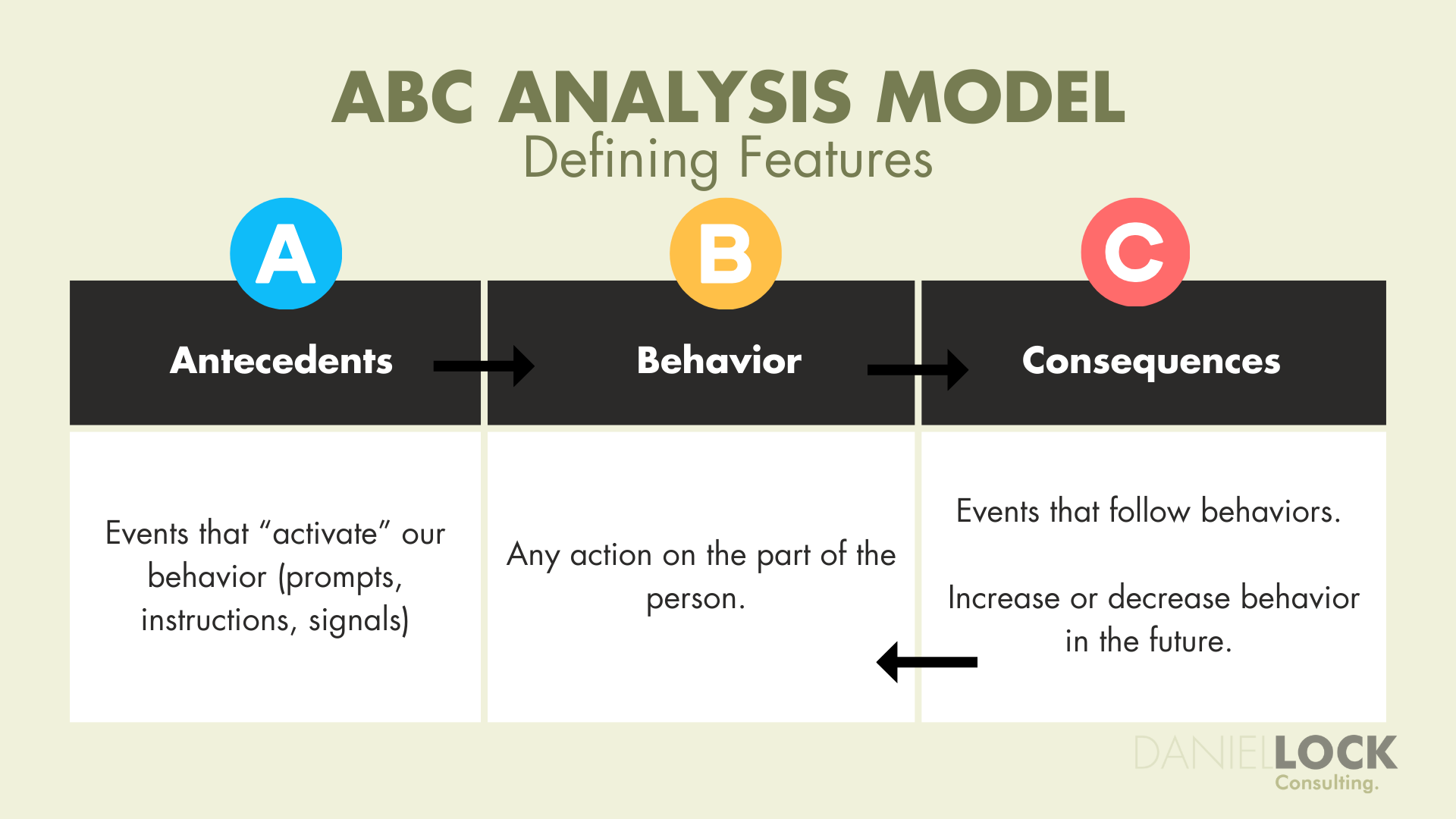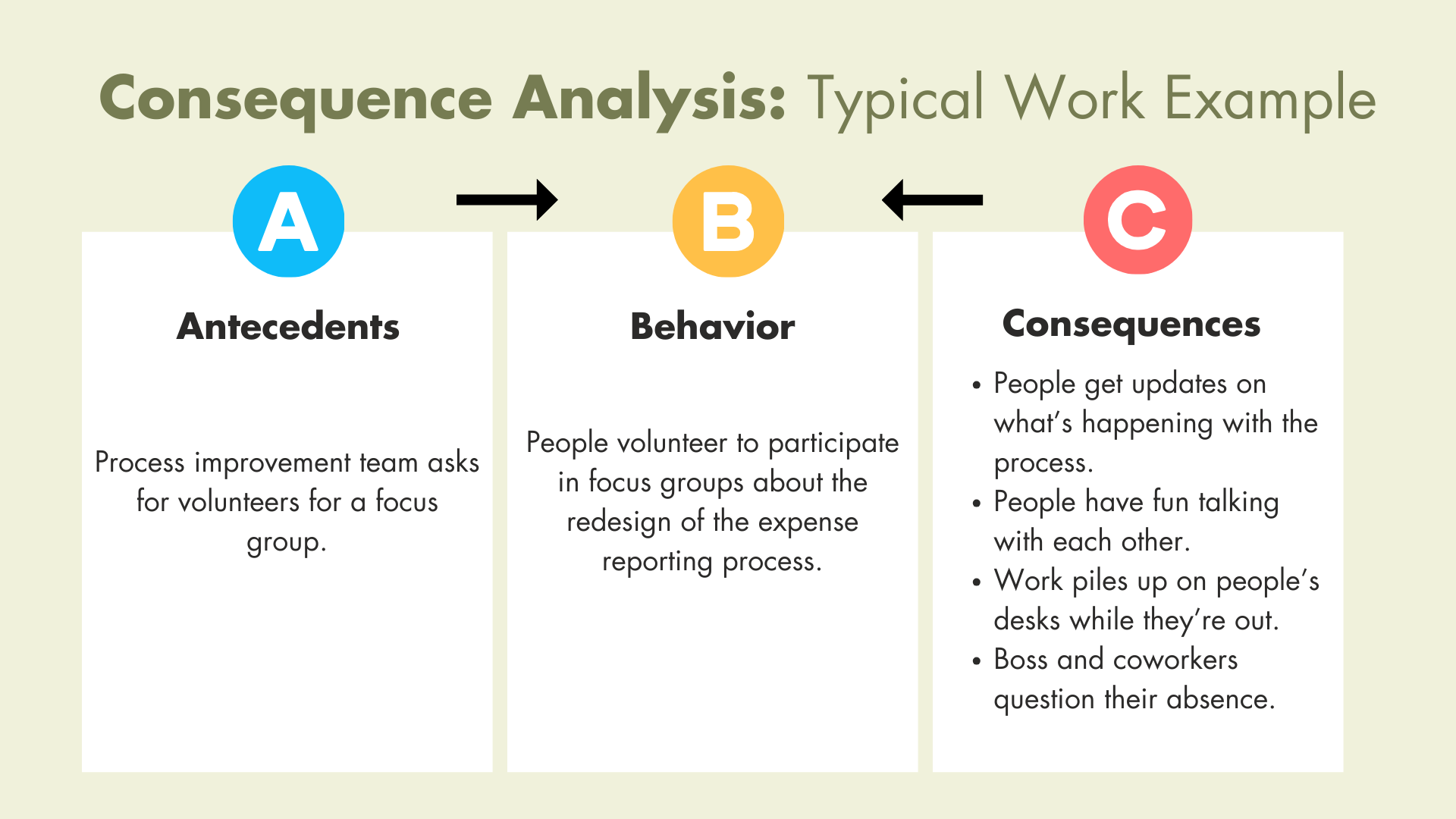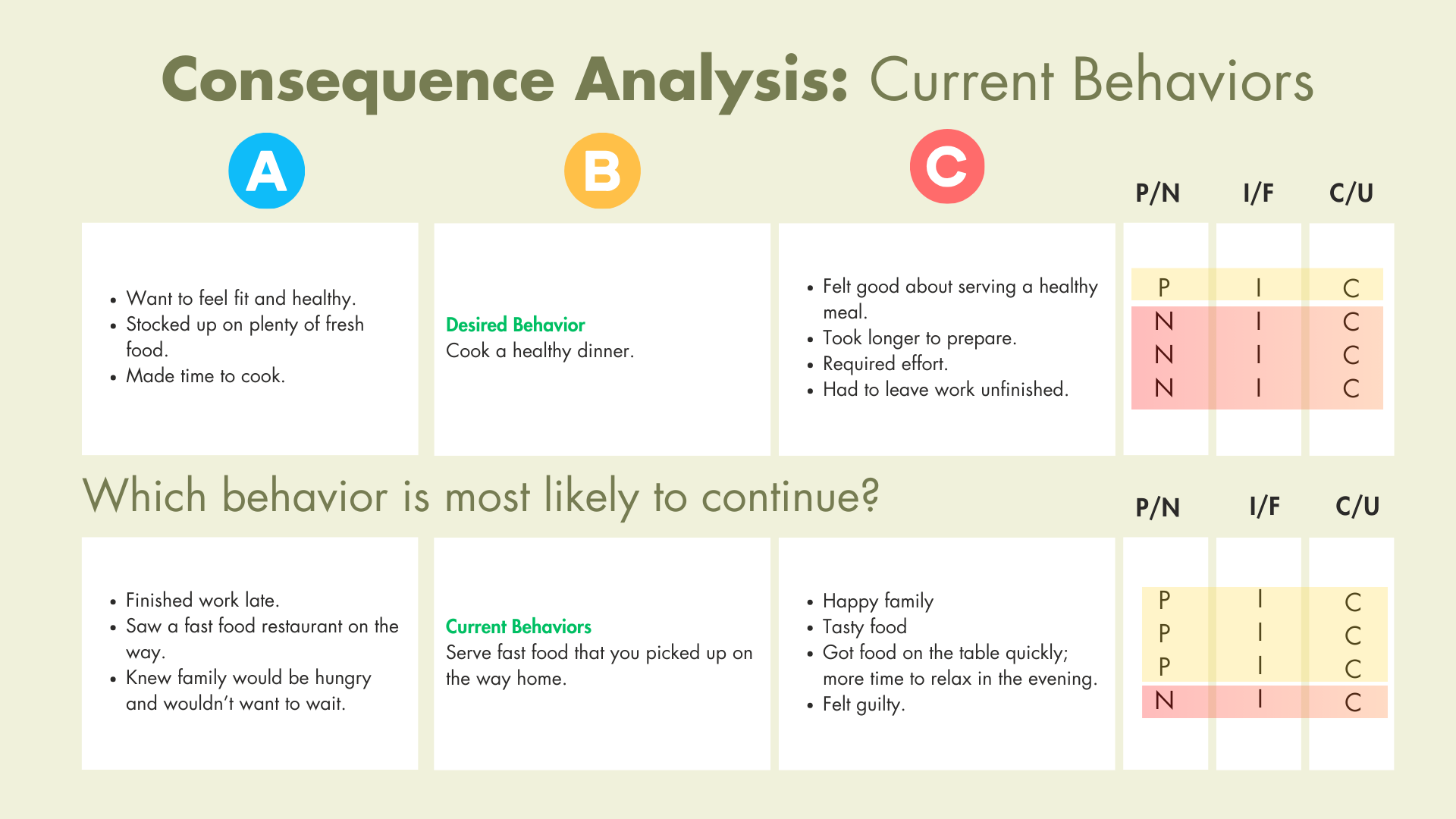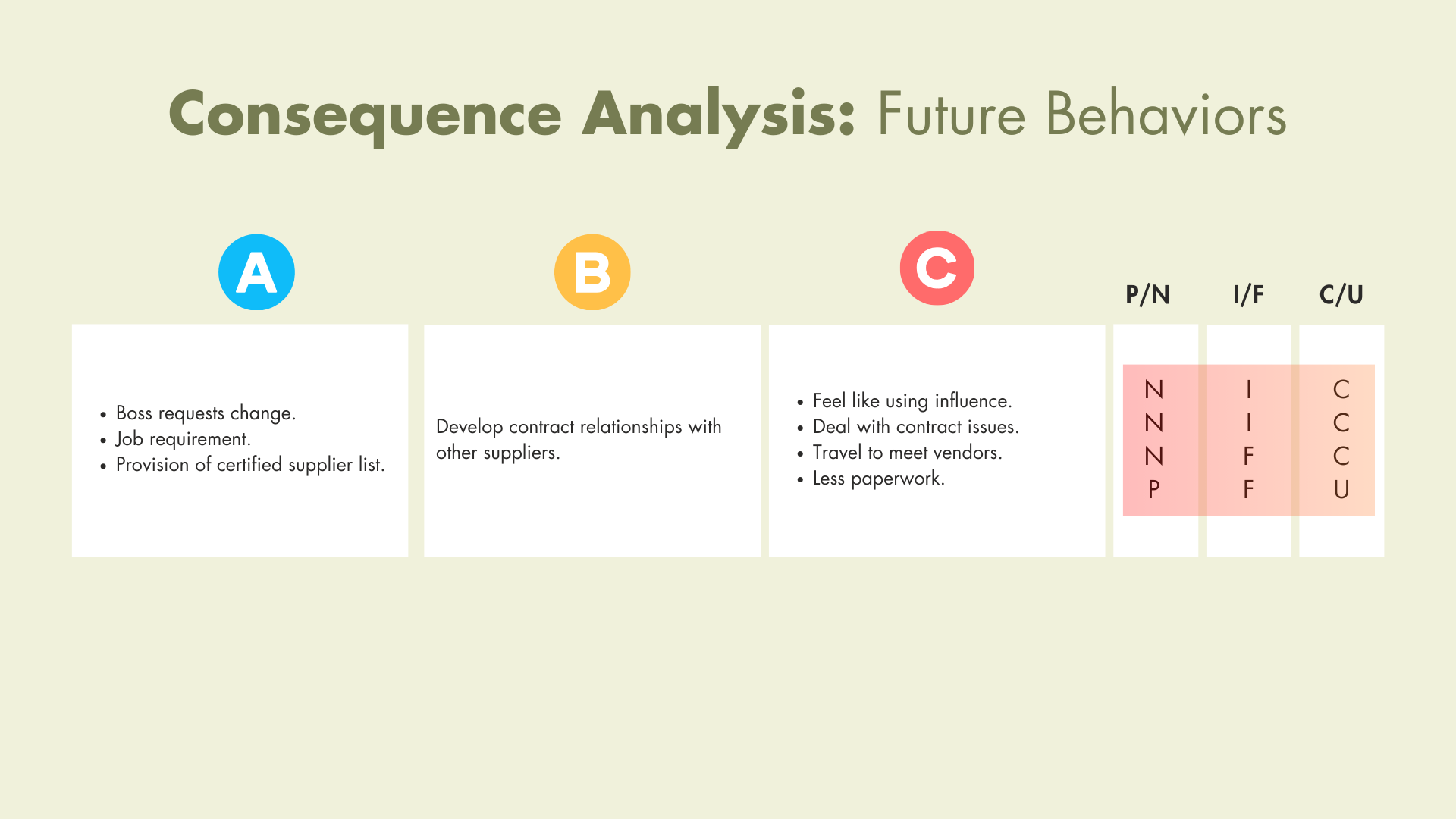Change is inevitable, and in the realm of organizational dynamics, it’s a constant. However, understanding the intricacies of change is crucial for effective management
One example of the foundational concepts that offer insight into this is the Antecedent-Behavior-Consequence (ABC) Model from behavioral psychology.
The Antecedent-Behavior-Consequence (ABC) Model is a psychological framework used to understand and analyze the sequence of events that trigger and reinforce specific behaviors.
This model not only illuminates the intricacies of individual behaviors but also provides a roadmap for effectively managing and championing behavior change within a dynamic organization.
In this blog, we will explore the nuances of the ABC Model, breaking down its components and illustrating how they interact in the context of organizational change.
The Essence of Change
At its core, organizational change is a culmination of individual behavioral changes. Every change, regardless of its scale, is the result of a shift in behavior. This change, in turn, determines the nature and direction of the change.
In simple terms, behavior is anything a person says or a person does, be it presenting data in a report, facilitating a session, or merely listening to others.

In the context of ABC modeling in change management, the essence of change focuses on understanding the factors affecting behavioral change within an organization.
By identifying and adjusting the antecedents and consequences of behavior, organizations can influence and shape desired behaviors in their teams, making the transition to the desired state more fluid and sustainable.
Let’s further explore the individual components of the ABC analysis model.
Dissecting the ABC Analysis Model
Being a change manager means causing behaviour change.
Behavior occurs in response to various internal and external stimuli, and it’s shaped by a combination of individual experiences, perceptions, motivations, and the immediate environment.
The ABC Model or antecedent behavior consequence model is a foundational concept in behavioral psychology, offering a clear and systematic approach to understanding and influencing behavior.
By breaking down the intricate dance of cause and effect in human actions, the ABC Model provides an effective tool to dissect and influence behavior, especially in organizational settings. There are three main components:
Antecedents (A)
These are events that activate or trigger behavior. They can be prompts, instructions, or signals. While they precede whatever behavior occurs, they are believed to control only about 20% of it. For instance, in a workplace, examples of common antecedents could be a manager setting a deadline for a project. Other common examples include training, rules, policies, beliefs, and past experiences.
Behavior (B)
This is the action taken by an individual in response to the antecedent. Continuing from the previous example, an employee working overtime to meet the manager’s deadline would be the desired behavior or target behavior.
Consequences (C)
These are events that follow behavior. They play a pivotal role as they can either determine, increase or decrease the likelihood of the person or behavior recurring in the future. Consequences are believed to determine or control a whopping 80% of behavior. They can be positive (increasing behavior) or negative (decreasing the same behavior).

Other examples of consequences include social acknowledgments like feedback or praise, tangible rewards like bonuses or awards, work processes like completing a project, and activities like working on a computer.
Consequence Analysis in the Workplace
Reinforcement systems in organizations are designed to encourage desirable behaviors and dissuade undesirable ones. By understanding behavior analysis, the antecedents and consequences, organizations can effectively guide behaviors to align with their goals and objectives.
The ABC Model serves as the backbone of these systems.

To understand the ABC model’s practical application, consider the following work scenario:
- Antecedents: A team asks for volunteers for a focus group.
- Behavior: Individuals volunteer for the focus group.
- Consequences: Volunteers receive updates, enjoy discussions, but also face piled-up work and questions from superiors about their absence.
Consequences, as the aftermath of behaviors, play an instrumental role in shaping future actions.Their impact, however, is not just determined by their nature (positive or negative) but also by their timing (immediacy) and predictability (certainty).
Immediacy of Consequences
Immediate feedback or results are often more effective than delayed ones, particularly in shaping behaviors. The human brain for example is wired to respond more robustly to immediate stimuli.
- Immediate Consequence: An employee completes a task efficiently and is immediately praised by the manager. This instant recognition boosts the employee’s morale.
- Future Consequence: An employee finishes a project in January but receives feedback in June. The delay diminishes the impact of the feedback.
Certainty of Consequences
Predictability or certainty in consequences amplifies their effect. When individuals are certain about the outcomes of their actions, they’re more likely to adjust their own behavior, accordingly.
- Certain Consequence: In a company, every completed project on time always results in a bonus. Knowing this, employees are motivated to meet deadlines.
- Uncertain Consequence: In another company, bonuses are given sporadically, with no clear pattern. Employees are unsure if meeting deadlines will result in extra pay.
Positivity vs. Negativity of Consequences
Positive reinforcement (rewarding desired behaviors) often in cognitive behavior therapy yields more sustainable results in behaviors as compared to behaviors due to negative reinforcement or punishment. While punishment can deter unwanted behavior, positive reinforcement of behavior encourages repetition of desired behaviors and actions.
- Positive Consequence: An employee who consistently performs well is given a promotion, reinforcing their positive behavior.
- Negative Consequence: An employee who makes a mistake is reprimanded in front of the team. While this might prevent the mistake in the short term, it may also demotivate or create fear in the employee, affecting long-term performance.
Driving Change with Consequences
Consequences, which follow after a behavior occurs, can vary in nature. They can be positive or negative, immediate or future-oriented, and certain or uncertain. The most influential consequences are those that are both immediate and certain.
By applying the ABC Model, change managers can better drive change with the right consequences.
The Present: Leveraging Immediate and Certain Consequences
To effectively see problem behavior and drive change, managers should provide Positive Immediate and Cetain consequences (PICs) for behaviors that support change. They must also use Negative Immediate and Certain consequences sparingly and with care. Let’s dig in deeper with examples.
-
Positive Immediate and Certain consequences (PICs): Immediate rewards or affirmations for a target behavior can strongly reinforce the behavior, making it more likely to recur. The certainty of these rewards boosts this reinforcement, creating an environment where individuals feel appreciated and recognized for their adaptability and alignment with change.
-
Example: If a department swiftly adopts a new software tool, recognizing their efforts with immediate positive feedback or tangible rewards can ensure the continued enthusiasm for the software’s use.
-
-
Negative Immediate and Certain consequences (NICs): While negative feedback or repercussions can deter undesired or problem behavior, they should be used judiciously. These consequences, if overused, can create a culture of fear or resistance.
-
Example: If an employee struggles to adapt to a new process and immediately faces severe repercussions, they may become resistant to the target desired behavior and future changes, fearing further negative outcomes.
-
In behavioral science and management, immediacy and certainty are typically preferred because they have a more pronounced effect on producing positive behaviors.
Future and uncertain consequences, whether positive or negative, are generally less effective because of factors like temporal discounting (where future rewards or punishments are seen as less valuable) and the inherent unpredictability of the consequence.
-
Negative Future and Uncertain consequences (NFUs): These are repercussions that might occur in the future and are not guaranteed. The uncertainty and delay in these consequences can make them less effective as deterrents because individuals might discount the future risk or doubt the actual occurrence of the consequence.
-
Positive Future and Uncertain consequences (PFUs): These are potential rewards or affirmations that might occur in the future but aren’t guaranteed. The effectiveness of these as motivators can be limited because individuals might question whether the positive outcome will actually happen or may not value future rewards as highly as immediate ones.
Analyzing Current and Future Behaviors
Consider two contrasting scenarios for someone who is wanting to be healthy. Using the ABC Model, which behavior is likely to continue?

-
Desired behaviour is to cook healthy nutritious meals
-
Antecedent: Desire to be healthy, availability of fresh food, and time to cook.
-
Behaviour: Cooking a healthy dinner.
-
Consequences: Satisfaction from a healthy meal (PIC); but also the challenges of time to prepare talking longer than expected (NIC) and leaving work early and unfinished (NIC)
-
-
versus a situation where:
-
Antecedent: finished work late, went past a fast food restaurant on the way home; knew would have irritable hungry children at home
-
Behaviour: Serve fast food picked up on the way home
-
Consequences: Happy family (PIC); tasty food (PIC); felt guilty (NIC)
-
You can see there are two negative and immediate consequences for eating healthy, compared to the fast food scenario. Little wonder at proliferation of meal delivery services.

Taking this to the workplace, let’s examine a hypothetical scenario involving a process change to gain deeper insight into the dynamics of the ABC Model.
-
Antecedent:
-
Boss requests a change to the operating process (request with rationale)
-
Job requires staff comply with such requests
-
-
Behavior:
-
The target behavior Develop contract relationships with suppliers rather than autonomous account management.
-
-
Consequences>
-
Feel like losing influence (NIC)
-
Deal with contract issues (NIC)
-
Travel to meet with vendors (NFC)
-
Less paperwork (PFC)
-
Given these consequences, how receptive is the team likely to be towards this change?
While there’s a potential upside in reduced paperwork, the immediate and certain negative implications could overshadow it. The feelings of reduced influence and the anticipated challenges with contracts might make team members apprehensive. Moreover, the prospect of increased travel might not sit well with everyone, especially if they value their current work routines.
In conclusion, there would be a lot of consequences from the team!
In Conclusion
Using the ABC model offers a structured lens to view, identify, analyze, and influence target behavior, making it an invaluable tool in change management.
By understanding how behavior occurs, the triggers (antecedents) of behavior and the outcomes (consequences) of behavior, organizations can strategically drive desired behavior changes.
The key to positive behavior interventions lies in leveraging positive consequences for beneficial behavior and using negative ones for problematic behaviors judiciously. As organizations evolve, understanding the nuances of behavior becomes paramount, and the ABC model serves as a tool in this journey.


